Robert Colescott’s paintings feel very 2019. Slipping between trippy figuration and allegorical satire, offbeat art history references and Jim Crow-era stereotypes, Colescott’s dynamic canvases reckon with the issues that have defined cultural discourse for the last decade: racial tension and class disparity; the decolonization of the canon; the elusiveness of truth; debates over appropriation and who is allowed to tell someone else’s story.
These works were not, of course, painted recently. Colescott, who passed away in 2009, enjoyed a lengthy career from the late 1960s through to the 2000s, turning art’s own past against itself and reflecting, through art, on what it meant to be a black man in the 20th century. “No American painter of the late 20th century made such telling use of painting’s European past to lambaste the painful contradictions of the American present,” Roberta Smith wrote in her obituary of the artist.
Yet, despite Colescott’s continued relevance and critical favor, his work hasn’t received much in the way of institutional attention over the last two decades. Why?
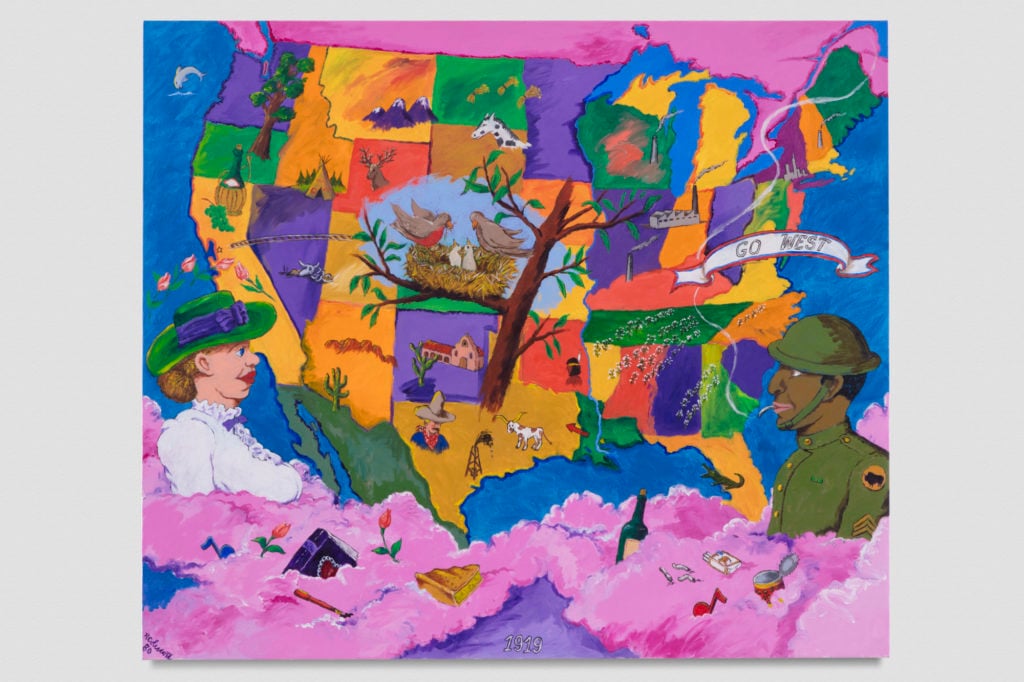
Robert Colescott, 1919 (1980). © 2019 Estate of Robert Colescott / Artists Rights Society (ARS), New York. Courtesy of the Estate and Blum & Poe, Los Angeles/New York/Tokyo. Photo: Joshua White.
The question over his legacy was the driving force behind “Art and Race Matters: The Career of Robert Colescott,” the first comprehensive retrospective dedicated to the artist, which opened last week at the Contemporary Arts Center (CAC) in Cincinnati and brings together 85 works that span Colescott’s 53-year career. The only other major American museum exhibition dedicated to Colescott’s work was mounted at the San Jose Museum of Art in 1987, before it also traveled to the CAC, making the new show a fitting return.
“Yes, Colescott was critically acclaimed, but there was also not a lot of writing about him, especially compared to other contemporaries,” CAC director Raphaela Platow told artnet News ahead of the opening. “There just wasn’t much about him at all.”
Platow, who co-curated the exhibition with Lowery Stokes Sims and Matthew Weseley, was struck by the gap between Colescott’s reputation and his status. In the years leading up to the CAC show, she and her team assembled a number of academics, curators, and museum directors in panels and seminars, looking at this enigma.
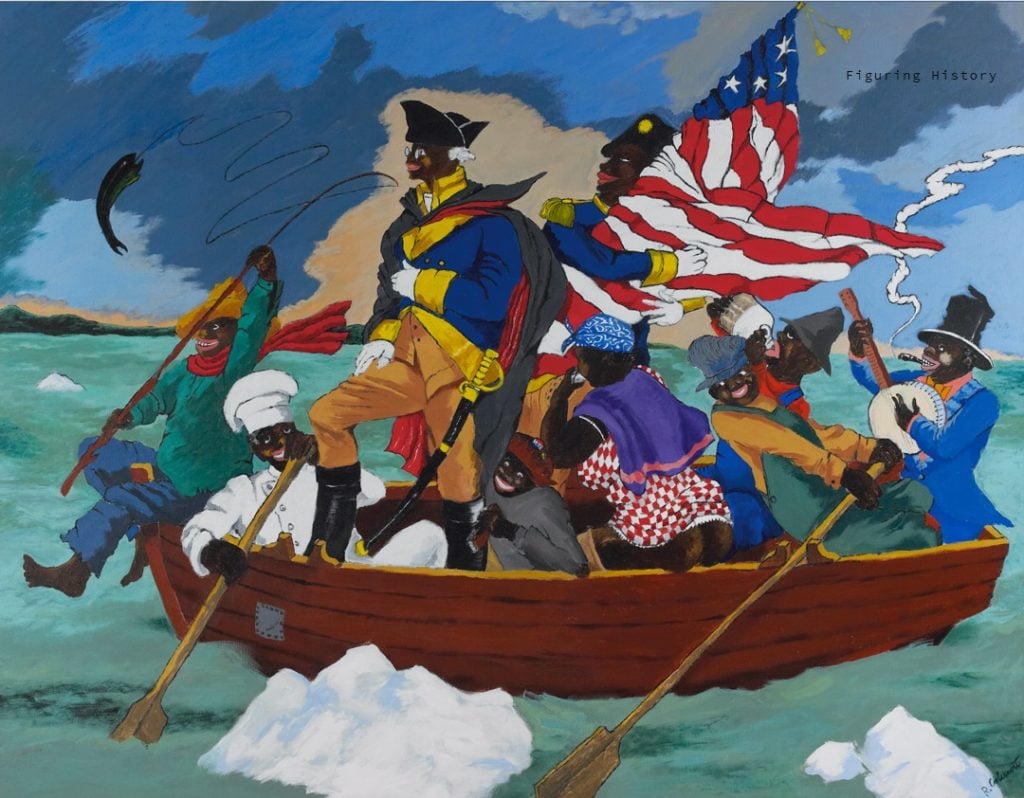
Robert Colescott, George Washington Carver Crossing the Delaware: Page from an American History Textbook (1975). © 2019 Estate of Robert Colescott / Artist Rights
Society (ARS), New York. Photo: Jean Paul Torno.
“We got a lot of answers from a lot of different perspectives,” Platow explained. “Some said it was the potency of the work, perhaps, or the way he lived his life. Maybe it was simply the subject matter and the fact that he always put things in the most subversive way possible—he always put his finger in the wound. But nobody was able to give me a straightforward reason.”
Stokes Sims, a longtime friend of the artist, isn’t so mystified.
“He misbehaved,” she explains matter-of-factly. “He did not conform to any of the canonical ideas about painting, about depictions, about points of view—he just misbehaved and we’re all better for it.”
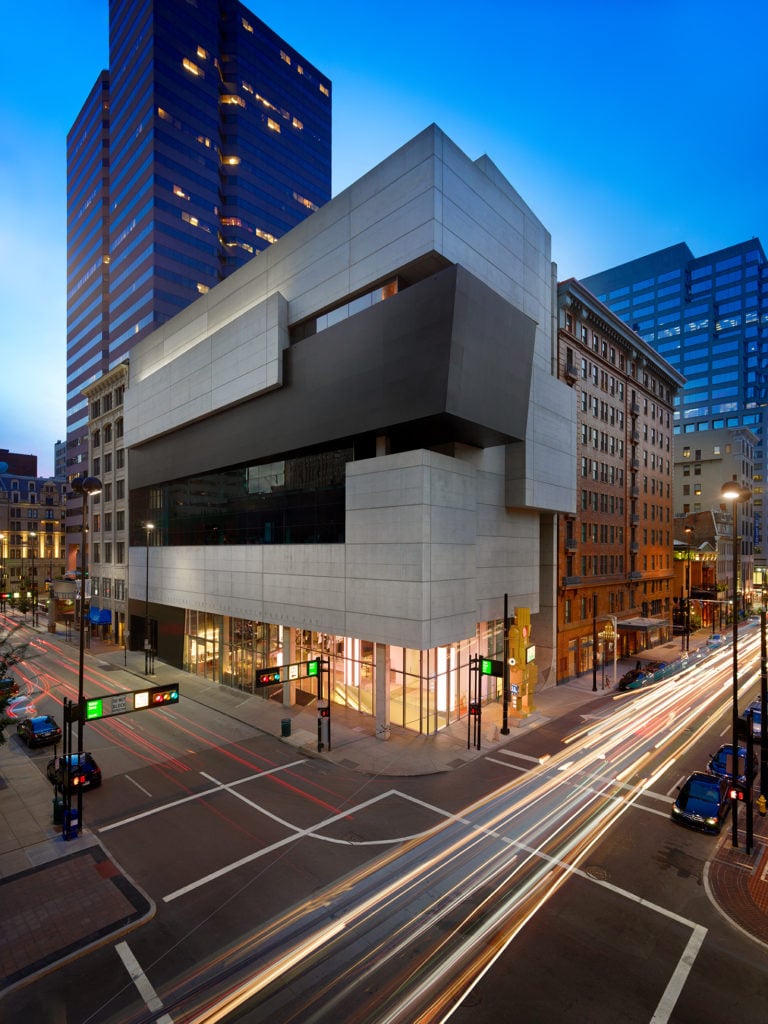
The Lois and Richard Rosenthal Center for Contemporary Art. Courtesy Contemporary Arts Center. © Ryan Kurtz.
Colescott was born in Oakland in 1925 and spent most of his life on the West Coast. After a tour in the army during World War II, he studied drawing and painting at UC Berkeley. He taught for nearly a decade at Portland State University before moving back to California in 1970, where he went on to take positions at places like Cal State, San Francisco Art Institute, and his own alma mater.
He completed many of his best-known works during the mid-to-late ’70s, wryly reimagining canonical classics with African American characters. In 1975, for what is among his most well-known works, he took on Emanuel Leutze’s Washington Crossing the Delaware, replacing the former president with inventor George Washington Carver. That same year, he made his own version of Van Gogh’s The Potato Eaters, with an all-black cast. In the top right of the picture is the painting’s title: “Eat Dem Taters.”
“This is very unapologetic work,” says Stokes Sims. “Yet, even at its most outrageous, his work is very earnest and serious about making a point.”
Stokes Sims first came across Colescott’s work at Semaphore Gallery in the 1970s, when she was working at the Met. “I looked at those paintings and went, ‘Oh my God,’” she recalls. “They just took every truism, habit, nicety, and tradition in life and blew them away. I loved it. They changed my life.”

Robert Colescott, Knowledge of the Past is the Key to the
Future: The Other Washingtons (1987). © 2019 Estate of Robert Colescott / Artist Rights Society (ARS), New York.
Whether because of bad timing, bad luck, or a conscious refusal of current trends, she notes that Colescott’s work often seemed to exist on a pole opposite the trend cycles of the art world. In the 1970s, he was playing with the limits of figuration while the art world was focused on idea-based art and conceptual practices. In the ’80s, Colescott was making paintings rife when symbolism while the famous artists of the era were all reverting back to manly abstraction.
Even within the sphere of black artists, he operated on a different frequency.
“The kind of black figuration that was accepted at that time was about this polemic about black liberation,” says Stokes-Sims. “Colescott was kind of about a liberation, but a liberation from the strictures of stereotypes and conformity and good behavior. He brought an irreverence to that polemic.”
Colescott’s brand of cultural critique loomed large for the generation that followed his. Stokes Sims and Platow point to artists like Kerry James Marshall, Kara Walker, and Joyce Scott as people who followed his lead in appropriating stereotypical black imagery to funny, absurd, and moving ends. Aesthetically, the echo of Colescott’s brand of “lumpy figuration” (Stokes Sims’s phrase for it) can be seen everywhere in galleries right now.
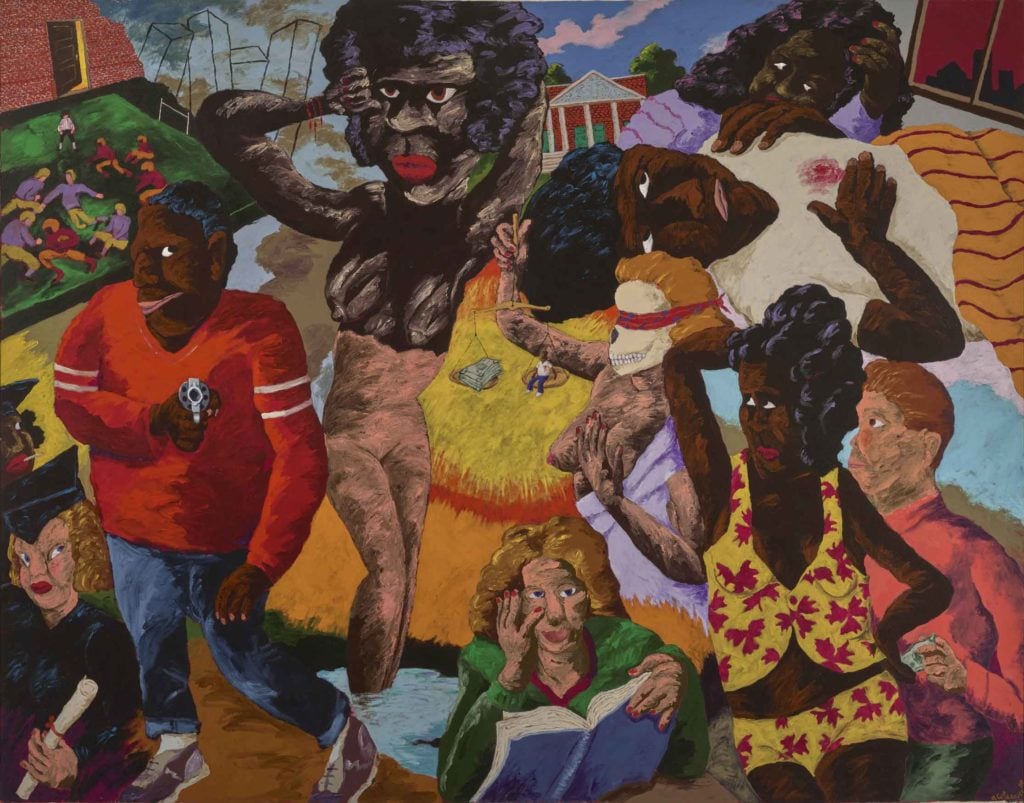
Robert Colescott, School Days (1988). © 2019 Estate of Robert Colescott /Artists Rights Society (ARS), New York. Courtesy of the Denver Art Museum.
Mounting an exhibition dedicated to a deceased artist is relatively uncommon for the CAC, which focuses mostly on living contemporary artists. Yet, for Platow, the opportunity to enter the conversation about Colescott’s legacy was one she couldn’t pass up.
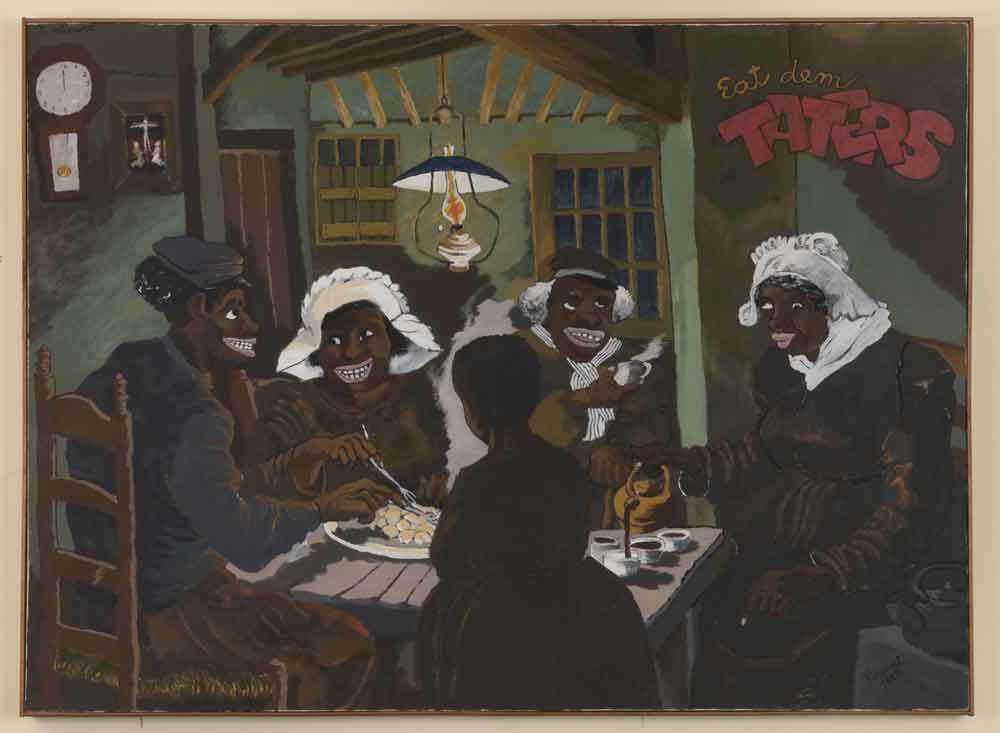
Robert Colescott, Eat Dem Taters (1975). © 2019 Estate of Robert Colescott /Artists Rights
Society (ARS), New York. Photo: Adam Reich.
“We felt that Robert Colescott was one of the protean figures that was so influential on peers and younger artists, and in a way that hadn’t been uncovered or talked about or acknowledged,” she says. “He was a living, breathing contradiction to so many people. He looked with great reverence to art history for source material, and then at the same time he did something so very different than anything that had ever been done before, content-wise. There were just so many things that didn’t make sense, that couldn’t be easily packaged: the gaudiness of the brush strokes, the bluntness of it, the in-your-faceness of it. I think he just confounded people.”

Robert Colescott,Shirley Temple Black and Bill Robinson White (1980). © 2019 Estate of Robert Colescott / Artists Rights Society (ARS), New York.
“Art and Race Matters: The Career of Robert Colescott” is on view at the Contemporary Arts Center through January 12, 2020.














